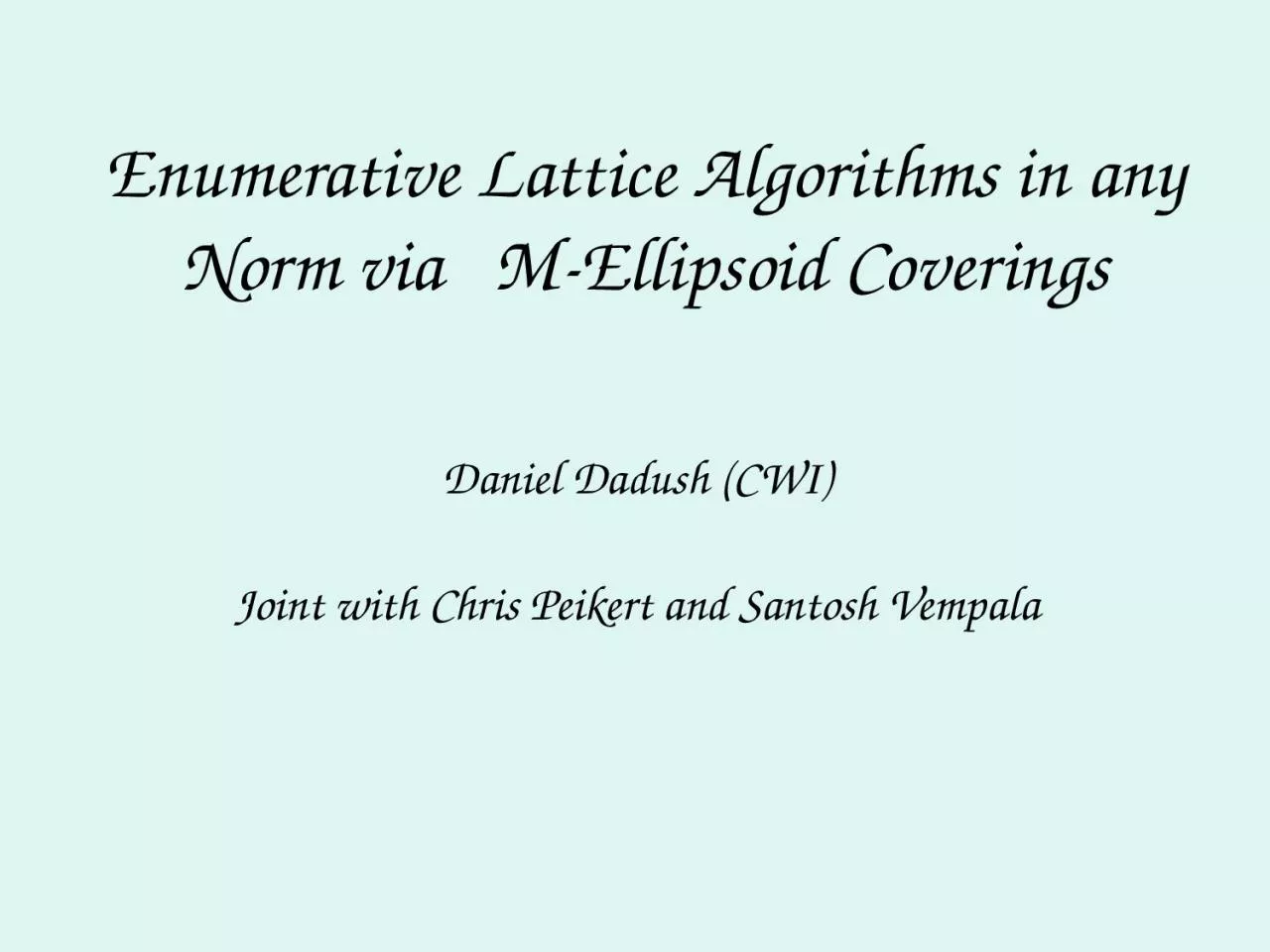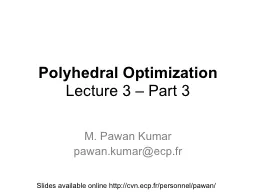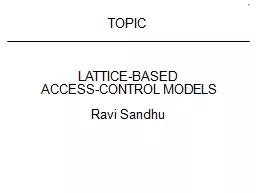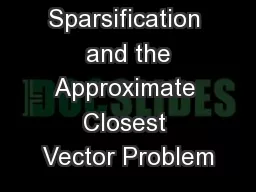PPT-Enumerative Lattice Algorithms in any Norm via M-Ellipsoid Coverings
Author : PeacefulPanda | Published Date : 2022-07-27
Daniel Dadush CWI Joint with Chris Peikert and Santosh Vempala Outline Introduction Classic Lattice Problems Results Algorithms for SVP CVP IP Analysis of SVP
Presentation Embed Code
Download Presentation
Download Presentation The PPT/PDF document "Enumerative Lattice Algorithms in any No..." is the property of its rightful owner. Permission is granted to download and print the materials on this website for personal, non-commercial use only, and to display it on your personal computer provided you do not modify the materials and that you retain all copyright notices contained in the materials. By downloading content from our website, you accept the terms of this agreement.
Enumerative Lattice Algorithms in any Norm via M-Ellipsoid Coverings: Transcript
Download Rules Of Document
"Enumerative Lattice Algorithms in any Norm via M-Ellipsoid Coverings"The content belongs to its owner. You may download and print it for personal use, without modification, and keep all copyright notices. By downloading, you agree to these terms.
Related Documents














